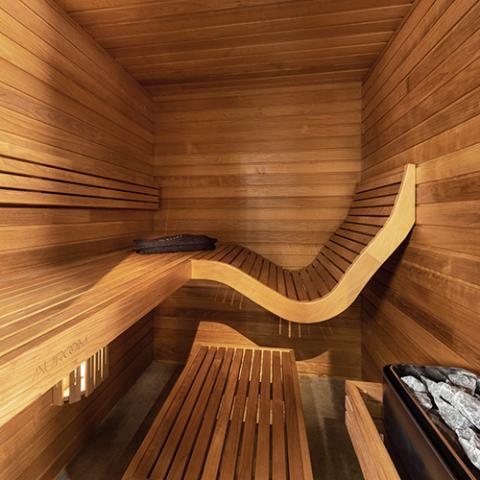The Ultimate Guide To Traditional Sauna
The Ultimate Guide To Traditional Sauna
Blog Article
What Does Traditional Sauna Mean?
Table of ContentsThe 2-Minute Rule for Traditional SaunaThe 5-Second Trick For Traditional SaunaTraditional Sauna for BeginnersWhat Does Traditional Sauna Mean?
A lot of the weight lost in a sauna is water loss and is re-gained upon rehydrating. Nonetheless, undeniably sauna can be a vital part of a healthy and balanced weight reduction program. To take a look at the distinctions in between standard and IR saunas, I will separate these right into proven, academic, and made distinctions.Therefore, the best point in the saunawhich is at the ceiling directly over the sauna heateris normally in between 185 and 190 F. Traditional Sauna. Claims that a typical sauna exceeds 200 F is simply not true and not applicable for electric saunas sold in the United States. The temperature level for a far-infrared sauna is generally set in between 120 and 140 F; nonetheless, unlike the traditional sauna, the goal in and IR space is not to attain a heat
As a result of this, the temperature level difference is almost unnecessary, given that excessive sweating causes both sauna kinds, yet the method of heating the body is different. In an IR sauna the bather will feel hot and will sweat a lot, but at a lot lower temperatures. Thus, if the goal is to spend longer time periods in the sauna, the IR sauna is a great selection.

Some Known Details About Traditional Sauna
When the heat is attained, the components cycle on and off to keep the heat. Most conventional sauna individuals enjoy putting water over the rocks to develop heavy steam to raise sauna humidity degrees. The benefits of pouring water over the rocks consist of: making the area extra comfy, dampening the nasal passages, and enabling the usage of aromatherapy by mixing necessary oils with the water.
In a far-infrared sauna, the warm front permeate the body to properly warm the body and increase the body core temperature. To attain this raised temperature, Far-infrared emitters produce infrared energy which is close to the same wavelength as that which the body naturally emitsoften referred to as the "Crucial Array" of 7 to 14 microns), so the power is well received by the body.
When the power enters the body, it causes the body temperature to boost and ultimately leads to sweat. In an infrared sauna it is necessary for the emitters/heaters to stay on almost continuously. Considering that there is no mass of rocks to keep heat, the sauna will certainly cool down if the emitters shut off.
As mentioned over, the sauna bather in an infrared space intends to place himself in front of operating emitters to obtain optimal advantage from the warmth. The heating time for the two spaces can be really different, relying on just how the rooms are used. For a conventional sauna, a bather should enable 30-40 minutes for the space to achieve a wanted temperature level and to effectively pre-heat the rocks.
The Greatest Guide To Traditional Sauna
A well constructed read this sauna will usually attain a temperature of 150-160 F in regarding 30-40 minutes (Traditional Sauna). For hotter temperatures, the space might need to heat for a longer period. As soon as the space attains established temperature level, the heating system will certainly cycle on and off, commonly operating regarding 50% of the moment. The shielded wall surfaces and the warmed rocks will keep the area hot and at steady temperature levels.
To some, 15 mins was "wasted" while the infrared energy heated the timber panels instead of warming a body, while others discover a pre-heated space to be more comfortable and think an elevated beginning temperature level is needed to start sweating. The length of advised usage for each and every space is around the exact same (10-15 minutes per session); however, due to the reduced air temperatures and the capacity to feel the impacts of infrared here are the findings heat faster than a standard sauna, it is not unusual for a person to invest an overall of 20-30 minutes in an infrared sauna.
Conventional saunas often tend to be bigger (therefore use even more electricity) than infrared saunas, although conventional saunas are definitely readily available in one and 2 individual dimensions. For a two-person standard sauna, 5x6 or 5x7 dimension is most prominent. The top bench can pleasantly seat two or 3 people and is also enough time to rest during the sauna session.


The ordinary expense per kWH of electrical energy in the U.S. is approximately $0.11, so a 4.5 kW heater will set you back approximately $.50 to run for one hour, if the heater runs continually for one hour. Commonly a sauna heating unit will run for 75% of the very first hour and 50% of subsequent hours on because the components cycle once the set temperature is achieved.
The Best Strategy To Use For Traditional Sauna
A 2 individual far-infrared space is normally literally smaller sized than a standard sauna, typically about 4' x 4' or smaller sized. The IR home heating system is generally 1.5-1.7 kW making use of a 120 volt 15 amp plug-in service. Given that the area can be used sooner than a sauna room, we will certainly presume the room is used for to of an hour including heat up time.
There is a seldom talked about distinction in the social experience between the two areas. While our culture has lost several of the social benefit of the standard sauna experience, it can be extremely socially rewarding. From family members visit time in the sauna, to heart-felt discussions with better halves, to sauna partiesthe standard sauna experience can cause intimate mingling.
The majority of greater end infrared rooms consist of tinted light therapy, noise systems and full-glass fronts.
Report this page